

Max Davies
2025 BYD Shark 6 review
5 Days Ago
Do you want a Kia Sorento for a little less money, and are you fine with front-wheel drive? There's a petrol V6 now available in showrooms that slashes the price by $3000.



News Editor
New from
$43,690
excl. on-roads

News Editor
New from
$43,690
excl. on-roads


News Editor
New from
$43,690
excl. on-roads

News Editor
New from
$43,690
excl. on-roads
Quickly see how this car stacks up against its competition. Select any benchmark to see more details.
Where expert car reviews meet expert car buying – CarExpert gives you trusted advice, personalised service and real savings on your next new car.
The fourth-generation Kia Sorento first arrived in Australian showrooms late last year launching with diesel across the range, with petrol V6 variants following earlier this year.
As in the previous generation of Sorento, the V6 gives buyers a cheaper option. It’s available across the same range of trim levels as the diesel but costs $3000 less than an equivalent oil-burner, though it misses out on the diesel’s standard all-wheel drive.
It’s a bit of an orphan engine. The Korean and US markets, for example, have gone from a V6 to a turbocharged four-cylinder engine with the latest Sorento.
For now, that just leaves Australia as one of the few markets for the engine, unless fellow right-hand drive markets New Zealand and South Africa put their hands up for it.
It’ll soon be joined by hybrid and plug-in hybrid models, both with turbocharged four-cylinder petrol engines and electrified running gear.
While fuel consumption is higher with the V6, that $3000 can buy plenty of extra fuel. There are also plenty of buyers out there who neither want nor need all-wheel drive. Is the Sorento V6 the smarter buy?

The Sport+ is the penultimate Sorento, slotting above the Sport but below the range-topping GT-Line.
In petrol V6 trim, the Sport+ is priced at $52,850 before on-road costs. Kia is currently offering nationwide drive-away pricing of $55,690.
In both cases, you’ll add $3000 for the diesel/all-wheel drive powertrain.
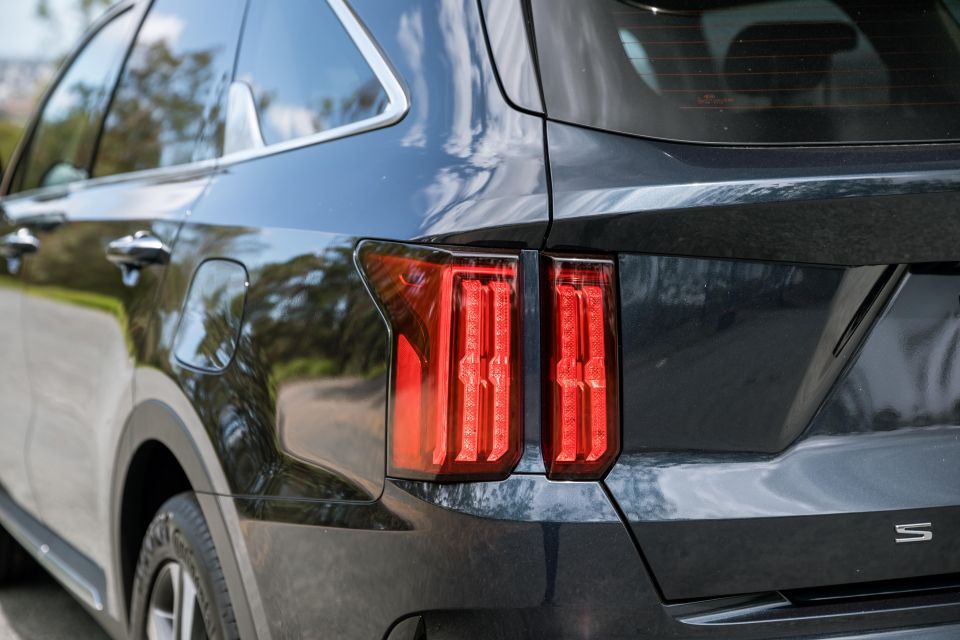
The Sorento Sport+ comes standard with the following features:
It also adds two additional USB ports for the second row, located on the sides of the front seats, and two USB ports for the third row.
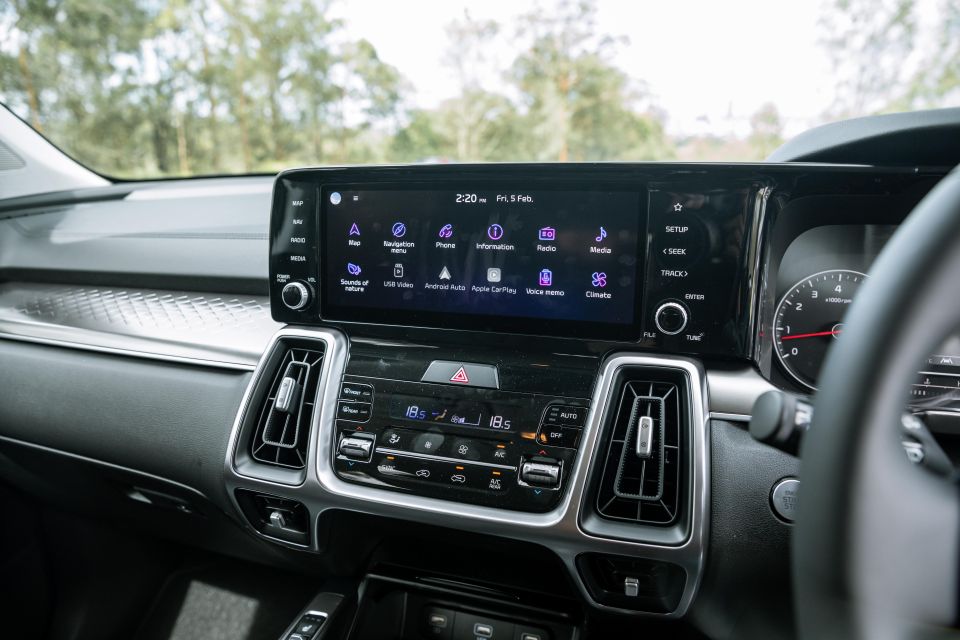
These features are in addition to features found in cheaper Sorentos, including:
The range-topping GT-Line has proved popular and it’s not hard to see why, adding swish features like remote start parking, in-car intercom, a head-up display, and Kia’s new blind-spot view monitor in the fully-digital 12.3-inch instrument cluster, plus niceties like a Bose premium sound system, panoramic sunroof, ventilated front seats and safety features like safe exit assist.
But it also adds around $7000 to the out-the-door price, which makes the Sport+ a smart option if you want convenience features like a power tailgate and keyless entry but can live without the rest.
In terms of features, the Sorento Sport+ V6 lines up fairly closely with the Mazda CX-9 Touring FWD ($53,490 before on-roads). The Mazda adds paddle shifters and a six-way powered front passenger seat, though it does without the power tailgate and third-row USB ports.
The Sorento’s twin under the skin, the Hyundai Santa Fe, is closest to the Sport+ in penultimate Elite trim. It boasts a 10-speaker Harman/Kardon sound system and an eight-way power passenger’s seat plus larger 20-inch alloy wheels, though it rings in at $54,300 before on-roads in front-wheel drive V6 guise. You can get most of the Sport+’s features but for a power tailgate and with a smaller 8.0-inch touchscreen in the Santa Fe Active, priced at $48,300 list.
Other similarly-specified rivals include the Toyota Kluger GXL FWD ($54,950 list) and Nissan Pathfinder ST-L FWD ($55,640 list), but both are due for imminent replacement and neither has quite the depth of content as the Sorento.
Other similarly-priced seven-seaters include the slightly smaller but all-wheel drive Skoda Kodiaq 132TSI Sportline ($50,290 list).
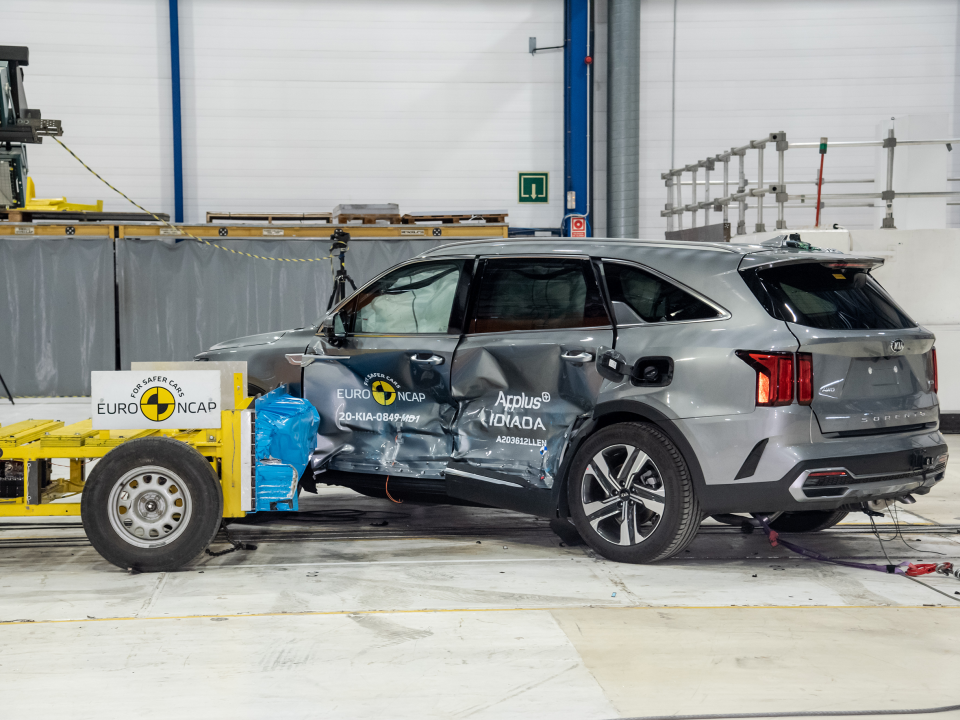
All Sorentos come standard with the following safety features:
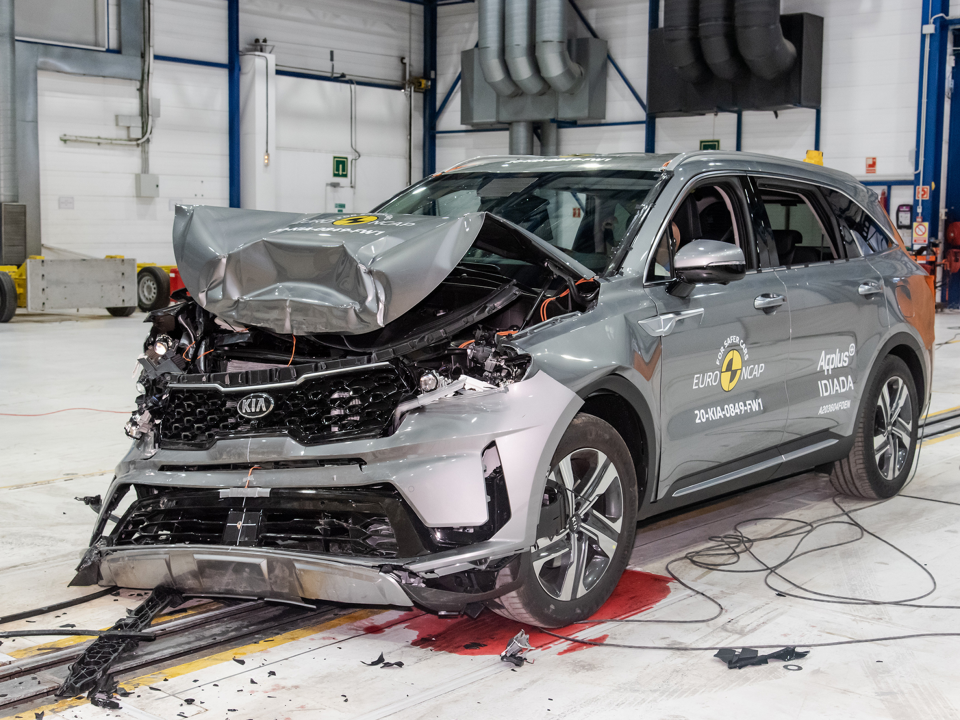
The curtain airbags don’t extend to the third row, however. That’s a bit disappointing considering the Sorento’s safety roster is otherwise quite comprehensive, with its blind-spot assist and rear cross-traffic assist going further than most rivals’ blind-spot monitoring and rear cross-traffic alert by intervening if you continue to veer or reverse into trouble.
ANCAP awarded the Sorento with a five-star rating last year but included a caveat that the rating applies only to the all-wheel drive diesel models. The V6 model has yet to be tested, while the diesel’s rating is based off Euro NCAP’s testing of the LHD Sorento Hybrid (the diesel is offered there too and the rating applies across the European line-up).
Kia Australia has advised it’s working to provide ANCAP with the data the safety body needs to assess the V6.
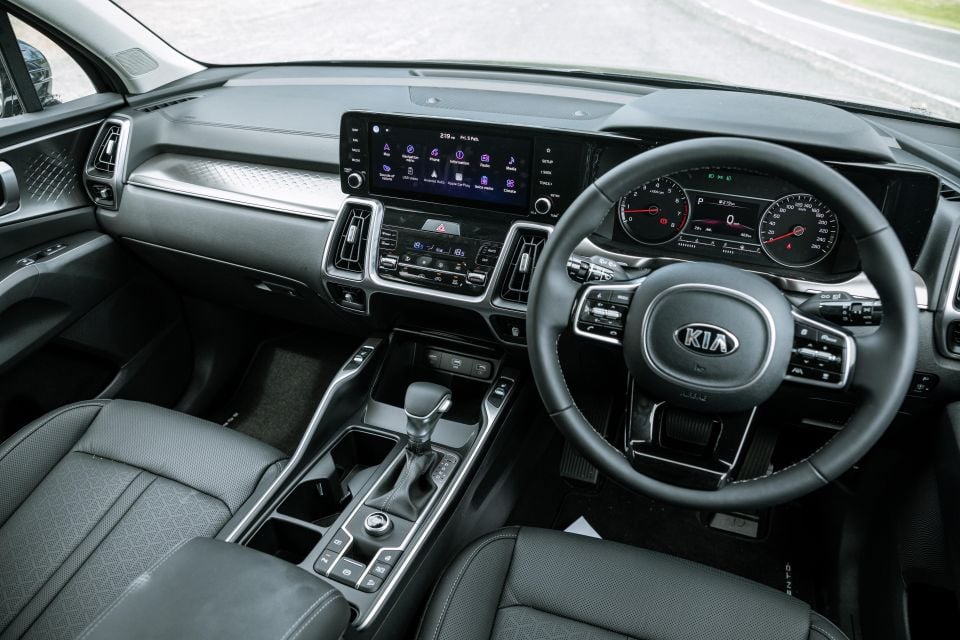
This is an interior that’s equal parts stylish and functional and might just be the most attractive cabin in the large crossover segment.
The dashboard looks chunky and purposeful, as befitting a large family crossover, but there are some stylish touches like the patterned metal-look trim on the dash and doors, and the attractive stitching details atop the dash.
All the new switchgear looks classy, especially the rocker switches for the climate control and the heated seat controls. The column stalks are chunky and well-damped, too, while soft-touch plastics are used for all but the very base of the dashboard and doors.

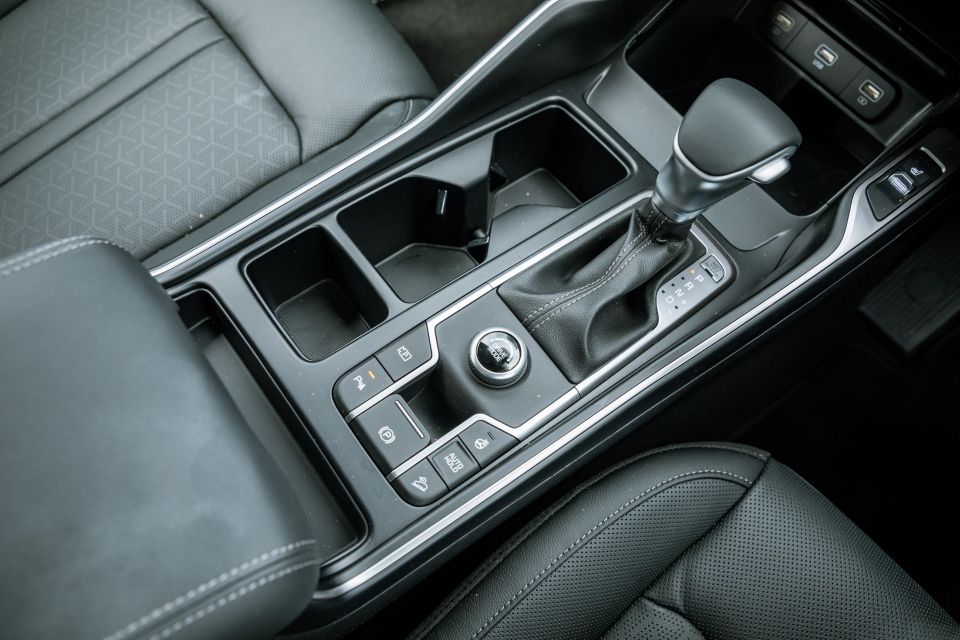
The 10.25-inch touchscreen infotainment system is mounted nice and high without having a tacked-on look, and Kia’s infotainment user interface continues to be one of the more aesthetically pleasing and easy to navigate. That applies to the neat navigation graphics, too. Props, too, for the infotainment displaying how far you’re into a song when you’re listening to Bluetooth audio.
We like that the four large air-conditioning vents on the dashboard have smaller counterparts directly below, allowing you to send air in different directions.
The presence of a dial for selecting drive modes, in place of a button, is also welcome. In all-wheel drive models, this dial is also used to select different terrain modes.
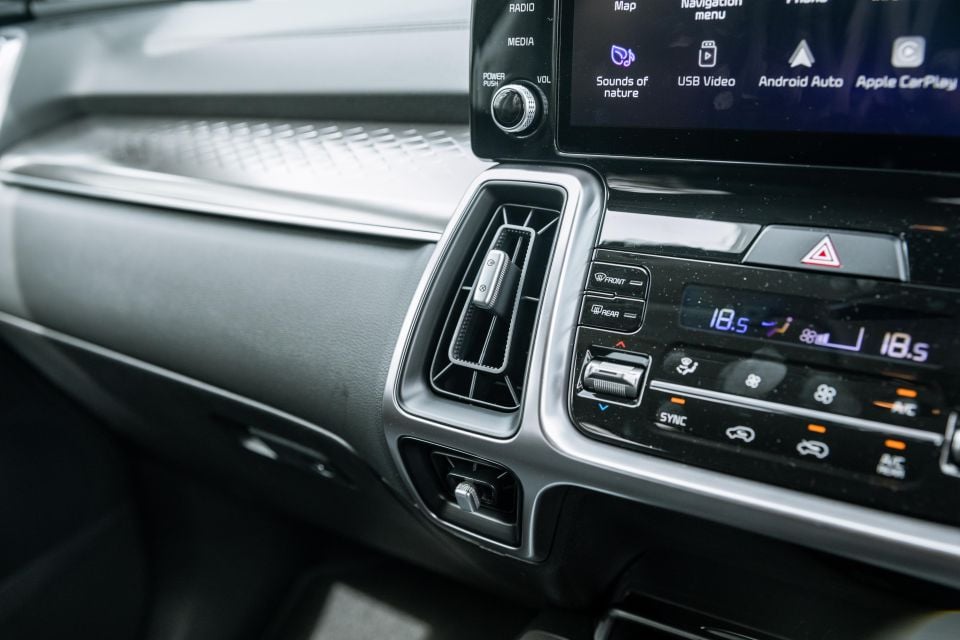
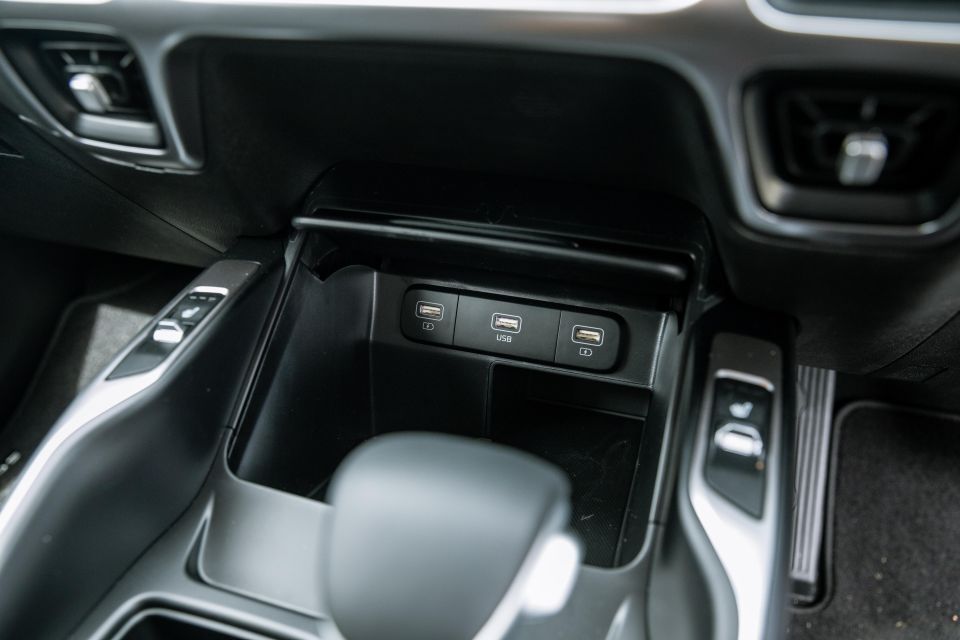
We could do without the touch-capacitive controls for the climate control. They look splendid until you touch them, leaving smudges on their piano black finish.
They also don’t have any haptic feedback and, frankly, we don’t think conventional buttons would look much worse. We also would like some soft plastic or leatherette trim on the sides of the centre console where you might want to rest your knee.
While there’s no sunglasses holder in the roof, there’s ample storage in the front of the cabin. That includes a cavernous centre console bin, two small trays in the centre console large enough for keys, and a hutch at the base of the centre stack with a fold-up lid, allowing you to conceal valuables.
The six-speaker set-up in the Sorento offers surprisingly good sound quality. No, it’s not Bose-level but it’s impressive for an unbranded system.
USB ports are the new cupholders. There are two in the rearmost row, one at the base of the centre console and one on each side of the front seats for second-row occupants, as well as three up front. Second- and third-row occupants also get their own 12V outlets, so you shouldn’t have to worry about kids complaining they can’t charge their phones and tablets.
Speaking of beverage holders, there are two cupholders in the first and third rows and four in total for the second row – one in each door, and two in the fold-down centre armrest. The front doors have bottle holders that can only fit a 600ml or so bottle, while the rear doors’ bottle holders can accommodate larger bottles.


The third row can actually accommodate adults, at least those around 180cm tall. To test this, we moved the front seats to a comfortable position for somebody that height, then slid the second row as far forward as could still be comfortable for occupants that height. That left the third row relatively easy to clamber into and, once seated, I had a decent amount of headroom and a quite hospitable level of knee room.
Third-row legroom feels on par with the longer CX-9, while there’s enough headroom that you don’t have to hunch over. Would I want to sit back here for a long road trip? Maybe not. Nevertheless, it’s proof the third row isn’t just a pair of jump seats for tiny kids.
There are vents for the third row, too, plus fan speed adjustment. Note, however, the temperature can’t be changed by either second- or third-row occupants.

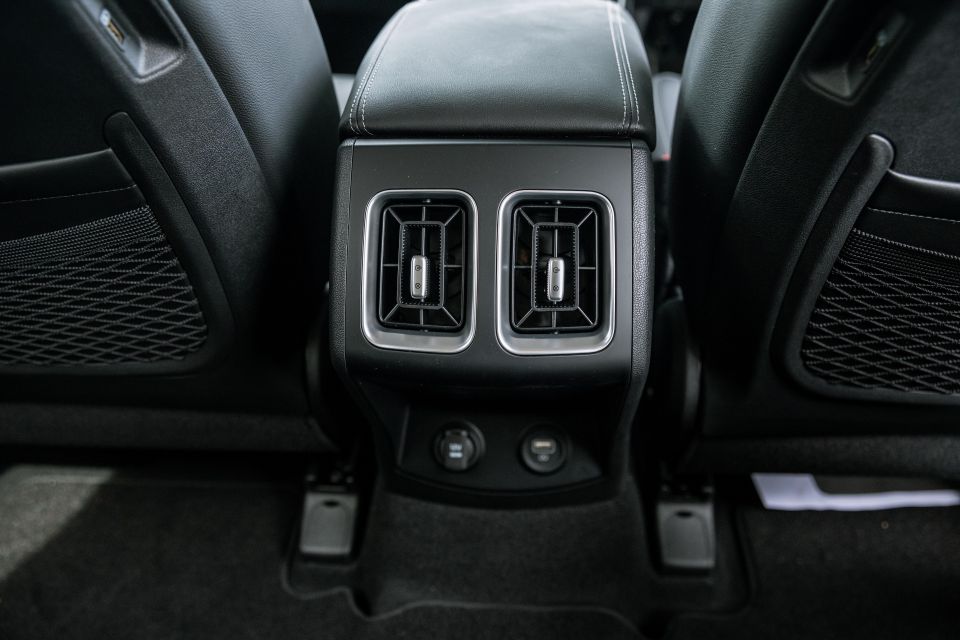
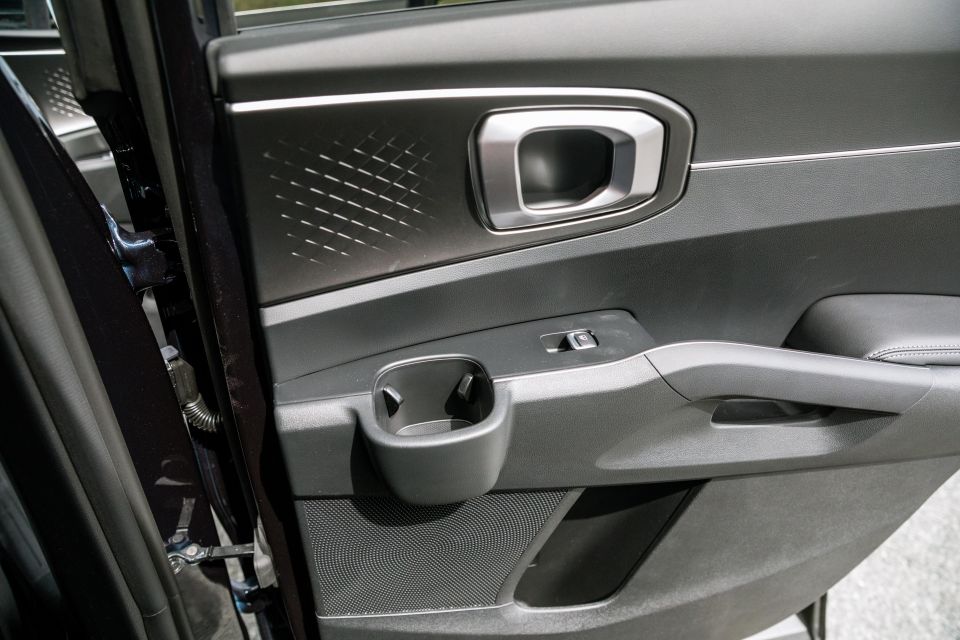
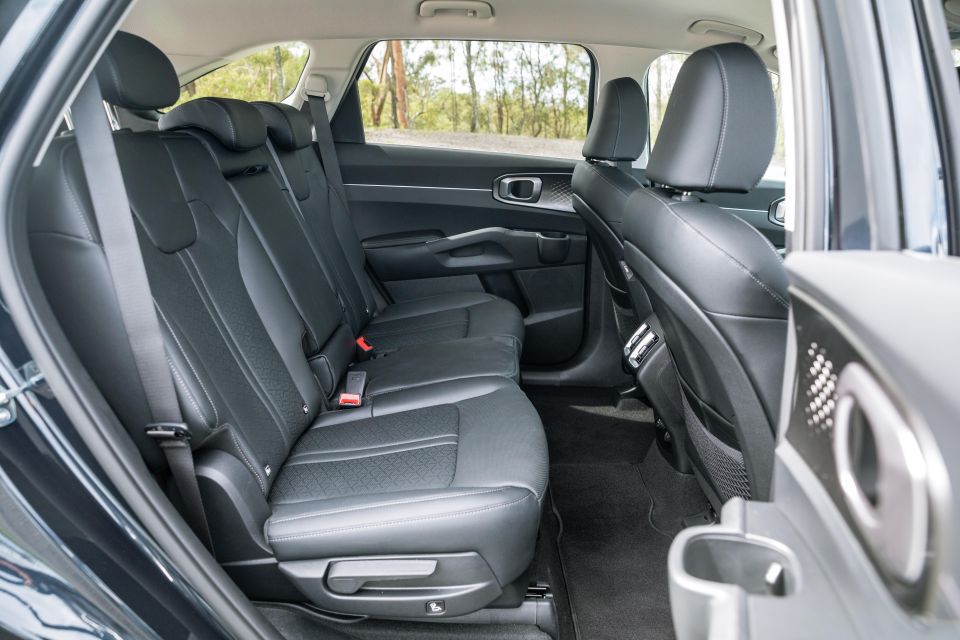
As on all 2021 Sorento models, there’s a one-touch folding system for the second row. You can fold these seats via a button on the second row itself or via buttons in the cargo bay.
The second row is comfortable and spacious, though the front seatbacks are covered in hard plastic. That might be your preference, though.
In total, there are five top-tether and four ISOFIX anchor points for child seats in the Sorento’s cabin.
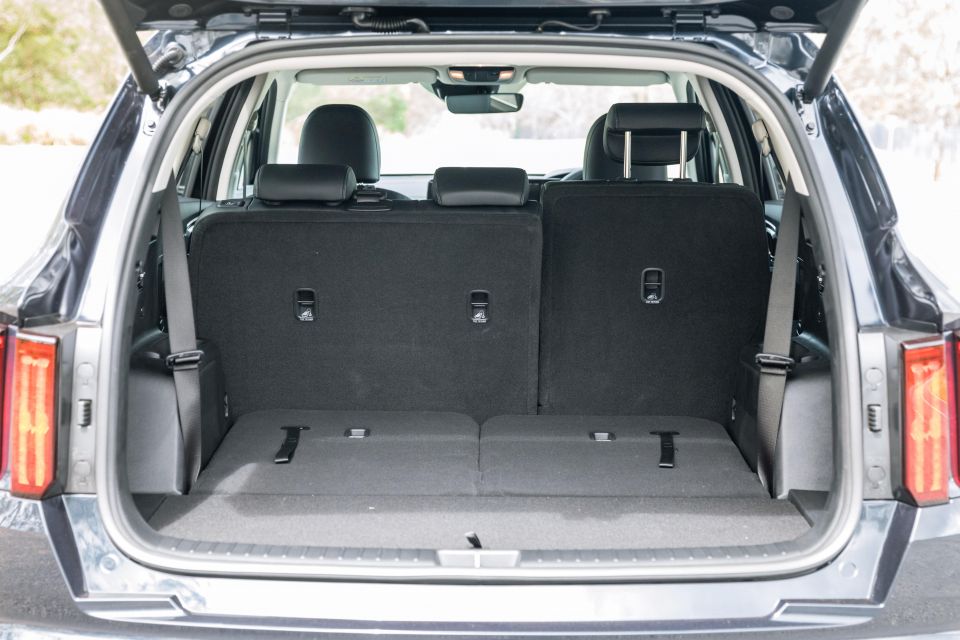
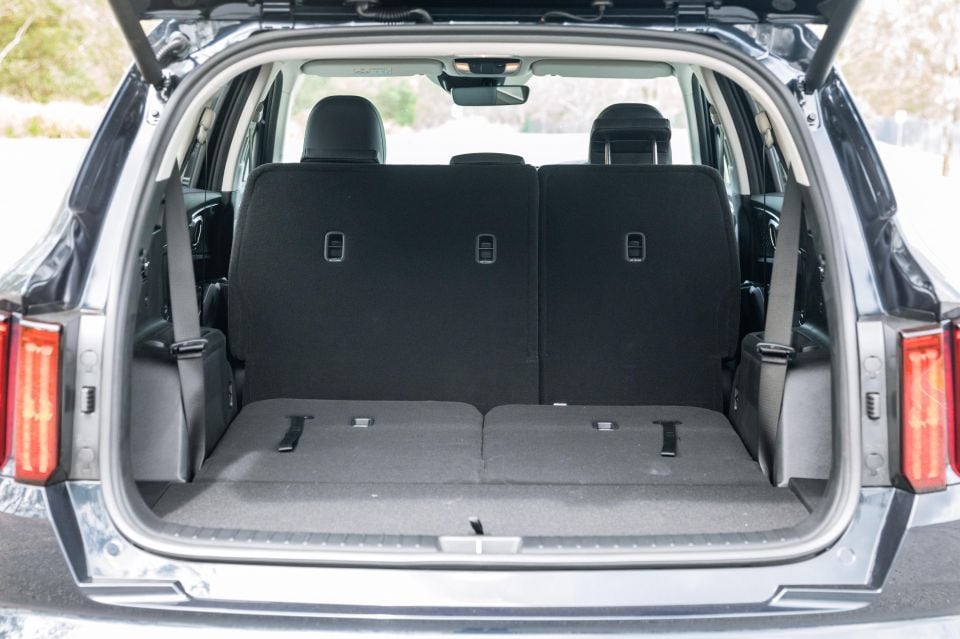

With all seven seats in use, cargo space is 187L. You’ll be lucky to fit one suitcase there. Suffice it to say, if you want to regularly haul seven people around and their luggage, you’d be better off with a Carnival. Thanks to its boxier shape, the Carnival has 627L back there.
You can fold the third row flat into the floor, increasing cargo space to 616L, while with the touch of a button you can fold the second row and expand cargo volume to 2011L.
Lift up the boot floor and you’ll find a spot for the cargo cover but no spare wheel. That’s because the spare – a full-size one, no less – is mounted under the car.
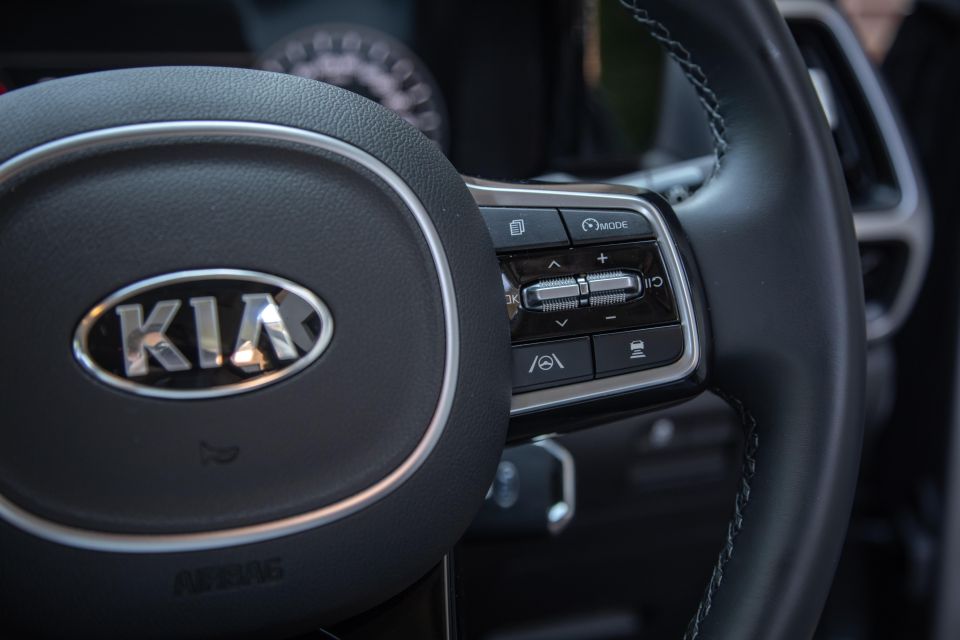
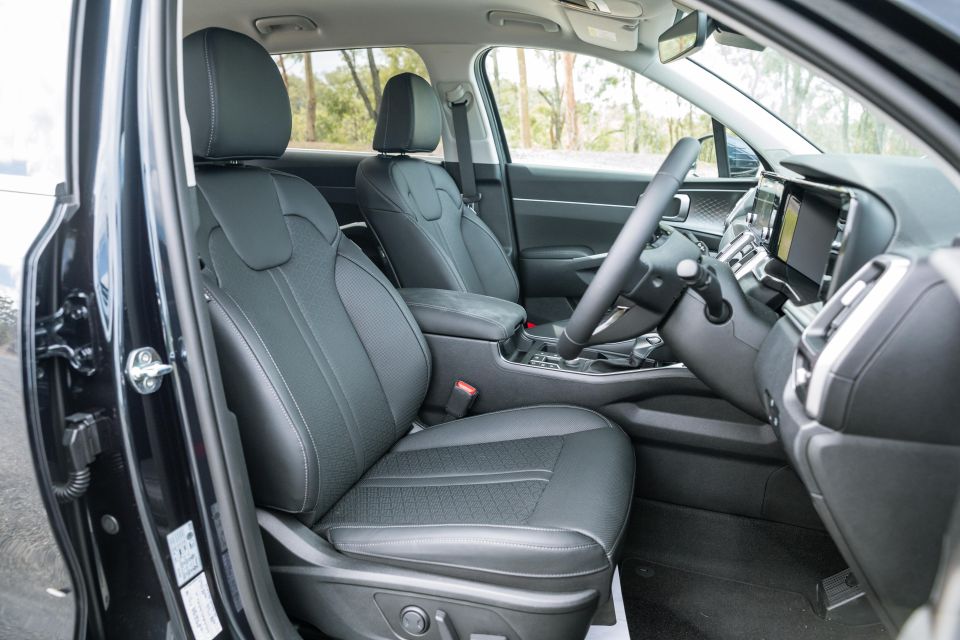
I usually find it pretty easy to get a comfortable seating position in cars and rarely adjust the steering wheel position too much.
However, I could never get quite the right seating position up front despite a power-adjustable driver’s seat and a tilt-and-telescoping steering column.
Mind you, everybody’s body physiology is different so take the time to get behind the wheel of a Sorento and get out on the road and see if you can get comfortable.
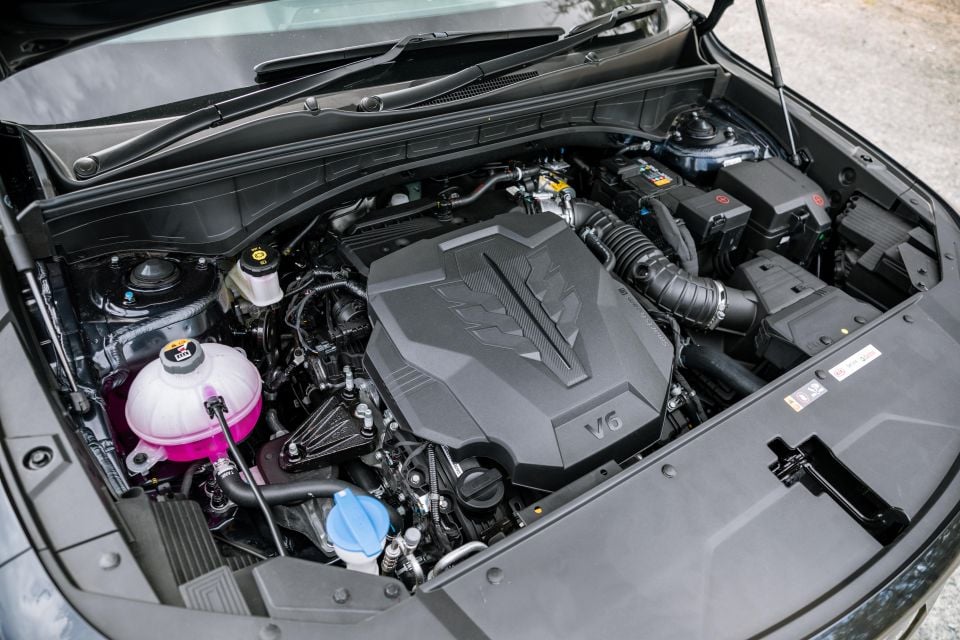
Where expert car reviews meet expert car buying – CarExpert gives you trusted advice, personalised service and real savings on your next new car.
The Sorento is powered by a naturally-aspirated 3.5-litre V6 engine producing 200kW of power and 332Nm of torque, mated to an eight-speed torque-converter automatic transmission.
While that’s 92Nm down from the diesel, the V6 has a 52kW advantage.
It lines up well with other V6-powered rivals like the Kluger (218kW/350Nm) and Pathfinder (202kW/340Nm), though the CX-9 offers almost diesel levels of torque if not V6 levels of power (170kW/420Nm).
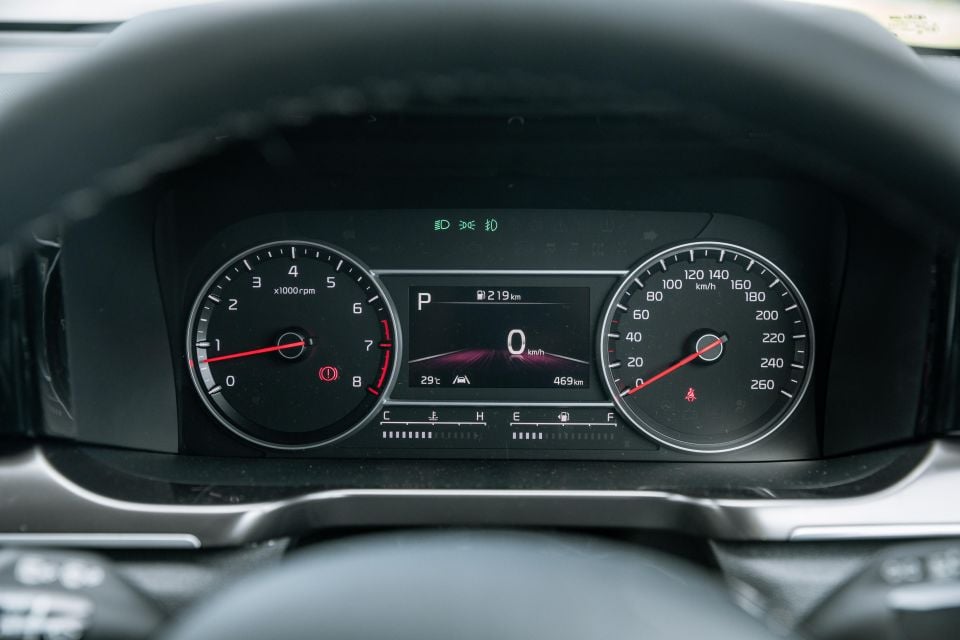
Officially, the Sorento has an ADR combined fuel economy rating of 9.7L/100km, compared to the diesel’s frugal 6.1L/100km claim.
We averaged 10.5L/100km on our loop, which comprises a mix of inner-city, suburban and highway driving.
Over the course of a week, fuel consumption increased to 12.1L/100km. That’s comparable to the 11.9L/100km we achieved in a front-wheel drive CX-9.
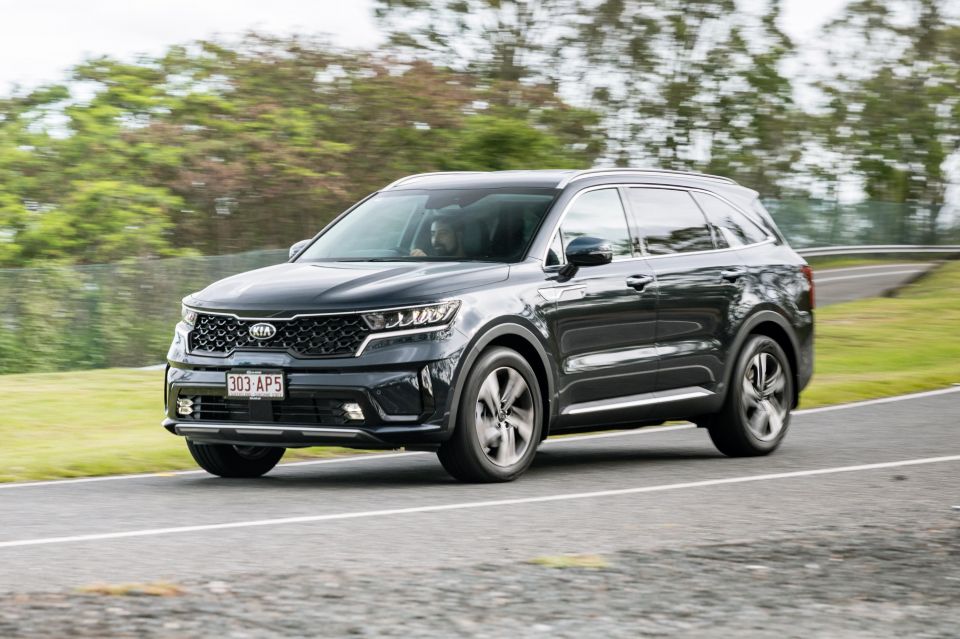
Those outputs are quite a lot for a front-wheel drive vehicle but the Sorento puts its power to the road with finesse. There’s very little torque steer – even if you plant your foot down, the steering wheel doesn’t tug to one side, nor do the front tyres squeal. You can only feel a hint of torque steer powering out of a corner.
The Sorento does feel a tad nose-heavy and safe understeer is its default. However, it comported itself surprisingly well on some twisty mountain roads, with body roll well controlled.
The steering mightn’t be the most communicative system out there but it’s well-weighted and enables you to confidently steer this 4.8m long SUV.
It’s light enough to make urban manoeuvres easy, too. It’s fortunate that it’s well-weighted as flicking the Sorento to Sport mode doesn’t add much weight to the steering.
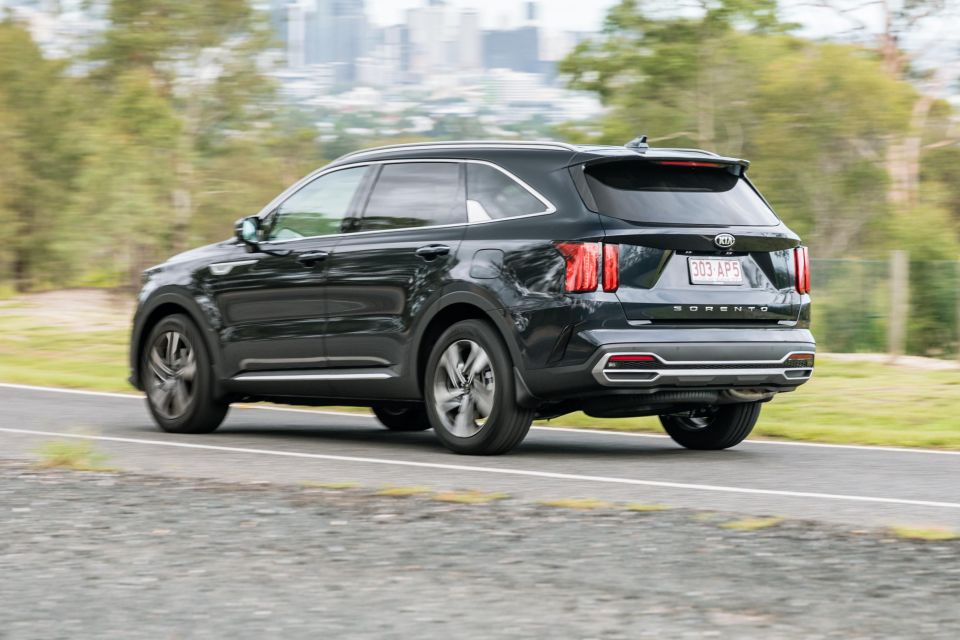
There’s almost a European feel to the Sorento’s ride quality. It’s firm and doesn’t isolate you from the road. Instead, it communicates bumps and ruts but there’s no impact harshness, with the suspension instead offering a good amount of rebound.
We drove this over some of Brisbane’s worst roads and it never crashed over bumps or felt unrefined. The Sorento will only disappoint if you’re looking for a pillowy ride. On unsealed and rutted roads, the Sorento’s ride quality is even more impressive. It’s smooth, even at high speeds, while stability control intervention is managed well.
On really steep grades, the V6 engine does need to be worked hard. And when really pushing the Sorento, the engine can start to sound a little raucous.
In most driving situations, however, it has a classic V6 sound and isn’t intrusive. The cabin is quiet on highways, with only a little wind noise emanating from the exterior mirrors.
Highway driving is a breeze with the adaptive cruise control and lane-following assist activated, the Sorento giving the impression it could easily drive for kilometres without your intervention but scolding you every time you decide to test that theory.
The lane-keeping assist makes its presence felt in day-to-day driving, though it does a decent job keeping you in your lane and vibrates the steering wheel if you veer out of your lane. To turn it off, you’ll need to access the settings via the touchscreen. However, it’ll turn itself back on when you restart the car. The lane-following assist, in contrast, is turned on and off via a button on the steering wheel.
Towing capacity is identical to the diesel: 750kg unbraked, 2000kg braked, and with a 200kg towball download. Despite this, we suspect many buyers who tow will still prefer to get the diesel.
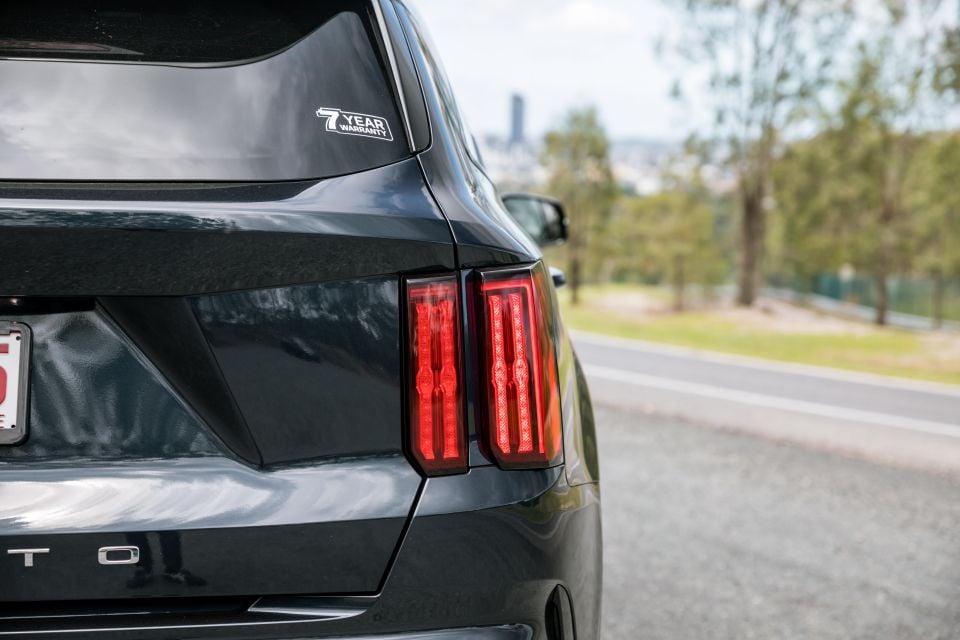
In addition to its seven-year, unlimited-kilometre warranty, Kia offers seven years of capped-price servicing.
Scheduled maintenance is required every 12 months or 15,000km for both the petrol and diesel models.
Over seven years, a petrol Sorento will cost $3449 to service against $3463 for a diesel Sorento. That means the average service cost works out to be just $2 in the V6’s favour.
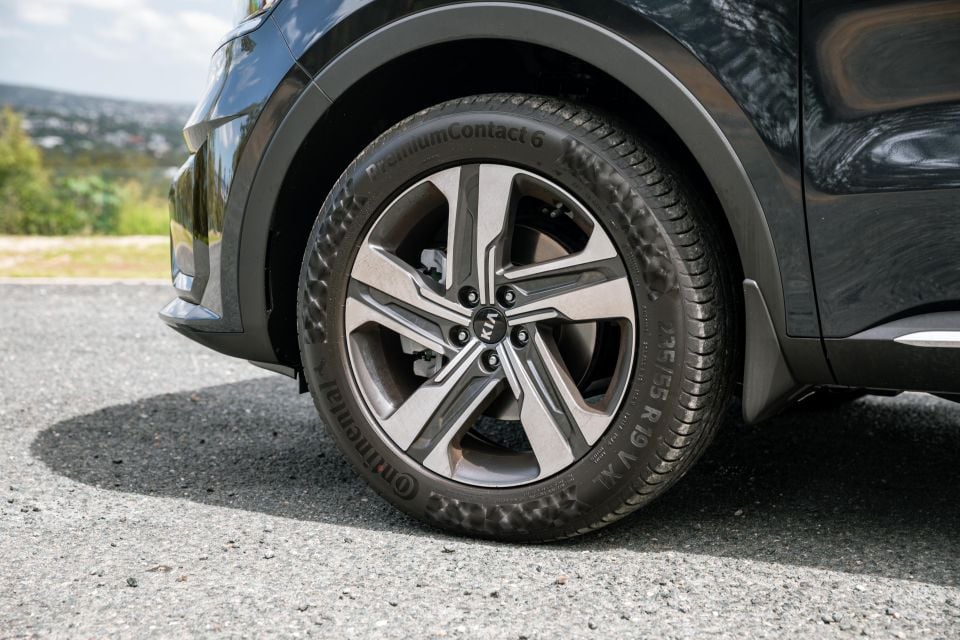
| Petrol | Diesel | |
|---|---|---|
| 1 year or 15,000km | $338 | $335 |
| 2 years or 30,000km | $533 | $544 |
| 3 years or 45,000km | $411 | $408 |
| 4 years or 60,000km | $725 | $729 |
| 5 years or 75,000km | $381 | $377 |
| 6 years or 90,000km | $657 | $670 |
| 7 years or 105,000km | $404 | $400 |
| Total cost | $3449 | $3463 |
| Average service price | $492 | $494 |
Where you’ll see more of a saving is in fuel economy. The diesel averages 6.1L/100km as noted earlier, or 3.6L/100km less than the V6.
At the time of writing, diesel fuel in Brisbane was on average around 10c/litre more expensive than the 91RON regular unleaded the V6 runs on. For reference, the fuel tank measures 67 litres.
If you’re on the fence about getting the diesel, perhaps because you don’t feel you need all-wheel drive, you’ll need to look at how much you drive and how much fuel typically costs in your area to see if it’s worth the $3000 premium.
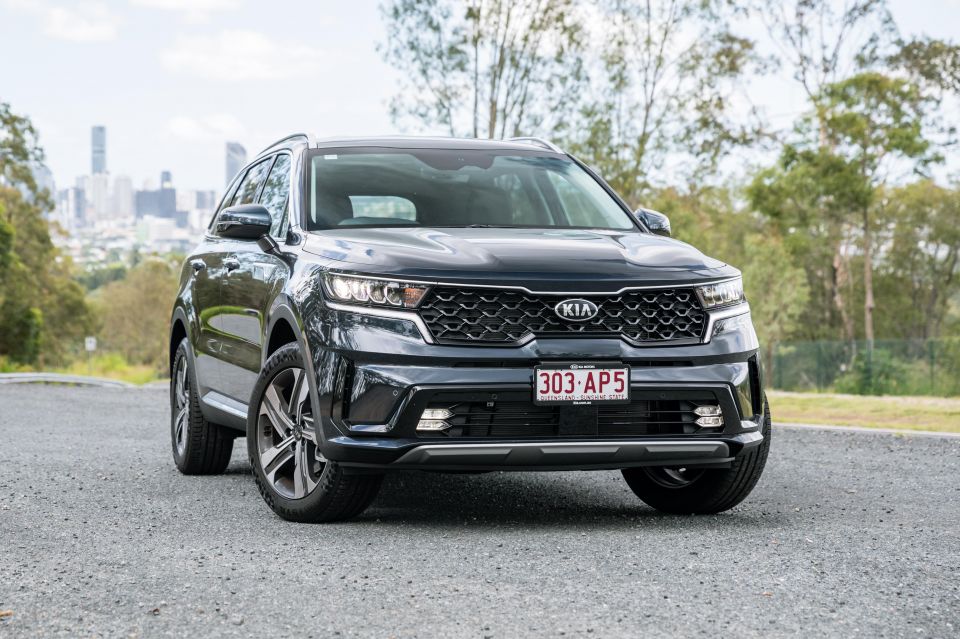
There’s no argument the diesel Sorento offers superior fuel efficiency and all-weather traction.
What is up for debate is whether you, the prospective Sorento buyer, drive enough to negate that $3000 premium and whether you feel you need all-wheel drive.
The Sorento V6 is thirstier than the diesel and, while it’s no VN Commodore on a wet road, it’s not going to offer the all-weather security of the all-wheel drive model.
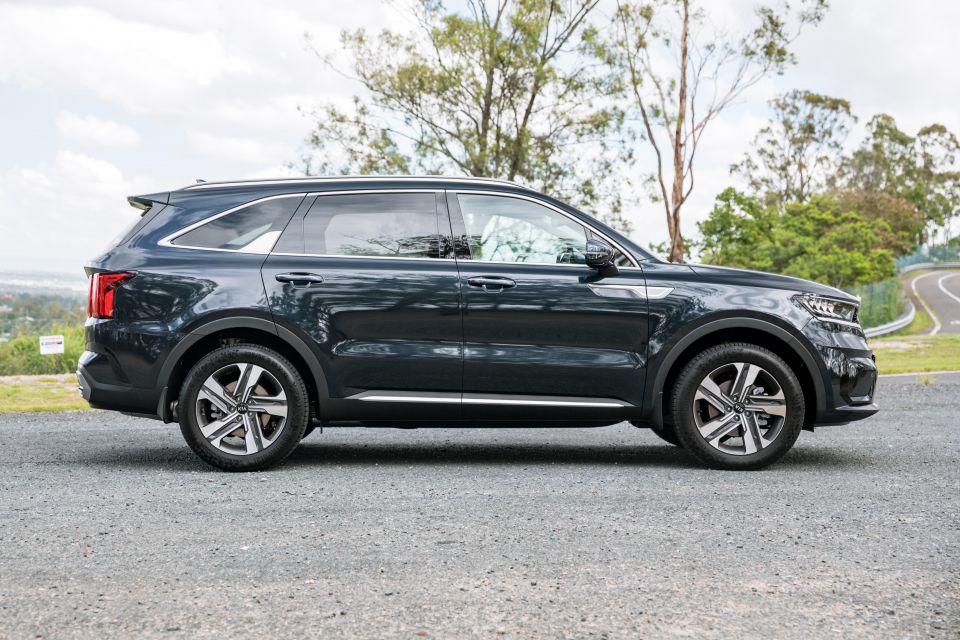
For $3000 less, though, you still get all the benefits of the Sorento. That includes a classy, well-built interior with clever features and a third-row that can fit something larger than a Christmas ham.
You also get well-sorted dynamics, a quiet cabin, and an impressive breadth of safety features, though we note the diesel’s five-star ANCAP rating doesn’t apply here…. yet.
While it’s disappointing we’ve missed out on the new turbocharged four-cylinder engine, the V6 stacks up well in the segment, particularly for an orphan engine.
Besides, the Sorento range is about to swell to include both a hybrid and a plug-in hybrid, an array of powertrains no rival – or any vehicle on the market for that matter – can match. And of the two powertrains we’ve tested so far, we can confirm both are capable and well-suited to this impressive crossover.
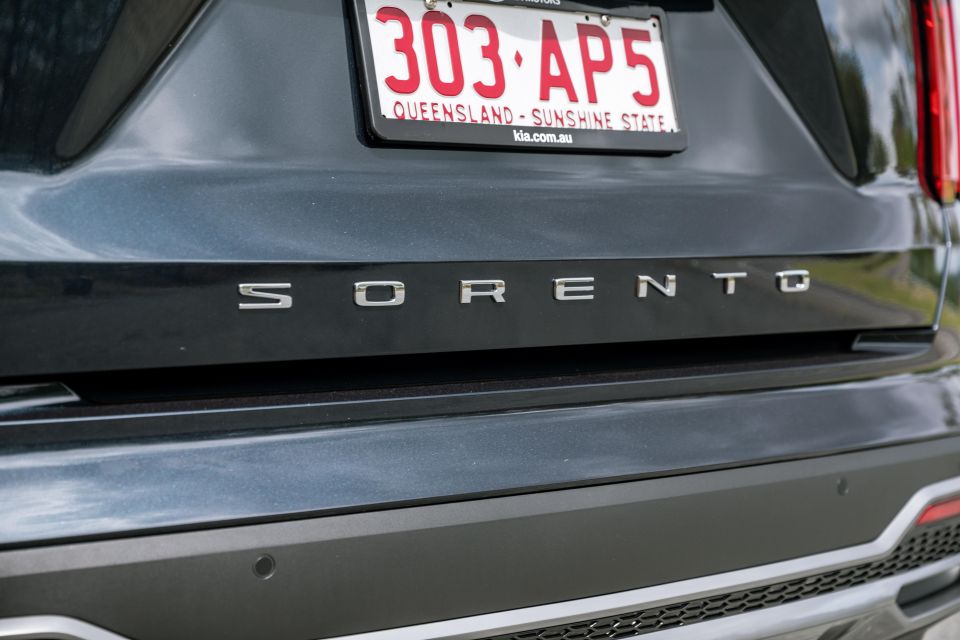
Click the images for the full gallery.
Where expert car reviews meet expert car buying – CarExpert gives you trusted advice, personalised service and real savings on your next new car.
William Stopford is an automotive journalist based in Brisbane, Australia. William is a Business/Journalism graduate from the Queensland University of Technology who loves to travel, briefly lived in the US, and has a particular interest in the American car industry.


Max Davies
5 Days Ago


Josh Nevett
4 Days Ago


Andrew Maclean
3 Days Ago


Shane O'Donoghue
3 Days Ago


Anthony Crawford
2 Days Ago
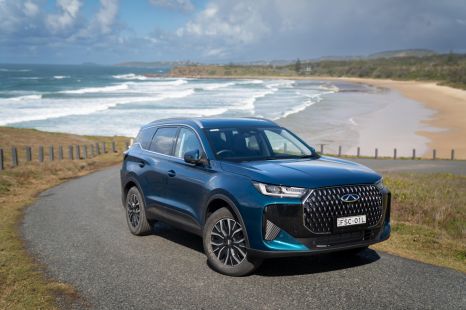

Andrew Maclean
1 Day Ago